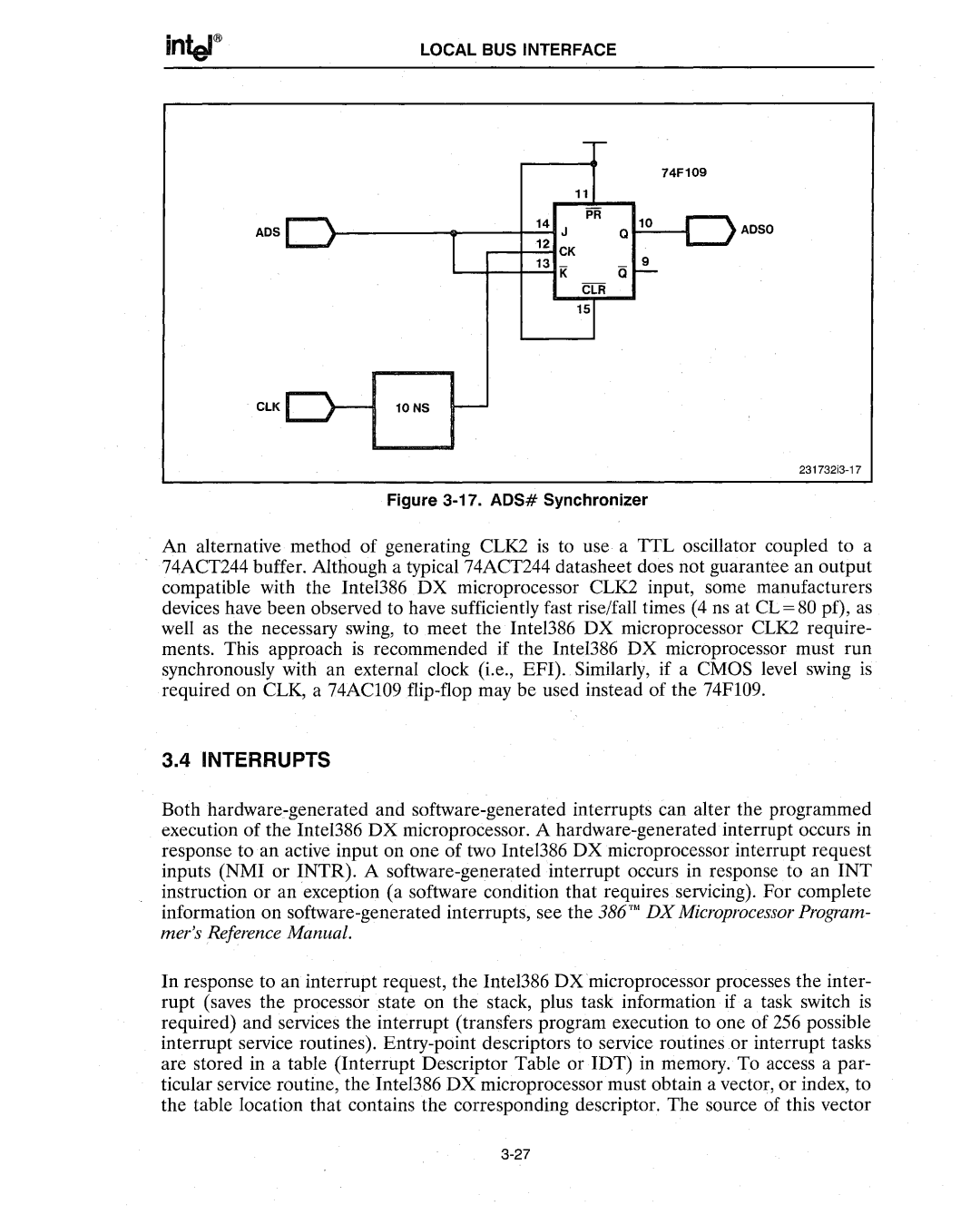
LOCAL BUS INTERFACE
|
|
| 74F109 |
|
|
| 11 |
|
|
| 14 | PR | 10 |
|
ADS | J | ADSO | ||
|
| |||
| 12 | CK | 9 |
|
| 13 | K |
| |
|
|
| Q |
|
|
| 15 |
|
|
ClK ![]() 10NS
10NS
Figure 3-17. ADS# Synchronizer
An alternative method of generating CLK2 is to use a TTL oscillator coupled to a 74ACT244 buffer. Altliough a typical 74ACT244 datasheet does not guarantee an output compatible with the Intel386 DX microprocessor CLK2 input, some manufacturers devices have been observed to have sufficiently fast rise/fall times (4 ns at CL = 80 pf), as well as the necessary swing, to meet the Inte1386 DX microprocessor CLK2 require- ments. This approach is recommended if the Inte1386 DX microprocessor must run synchronously with an external clock (i.e., EFI). Similarly, if a CMOS level swing is required on CLK, a 74AC109
3.4INTERRUPTS
Both
mer's Reference Manual.
In response to an interrupt request, the Inte1386 DXmicroprocessor processes the inter- rupt (saves the processor state on the stack, plus task information if a task switch is required) and services the interrupt (transfers program execution to one of 256 possible interrupt service routines).
